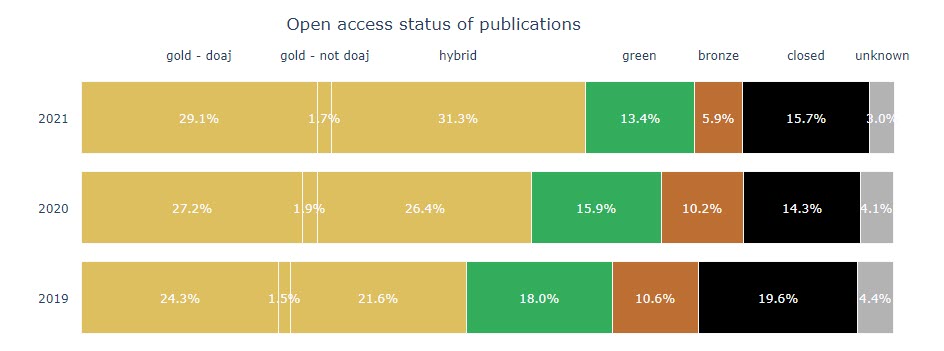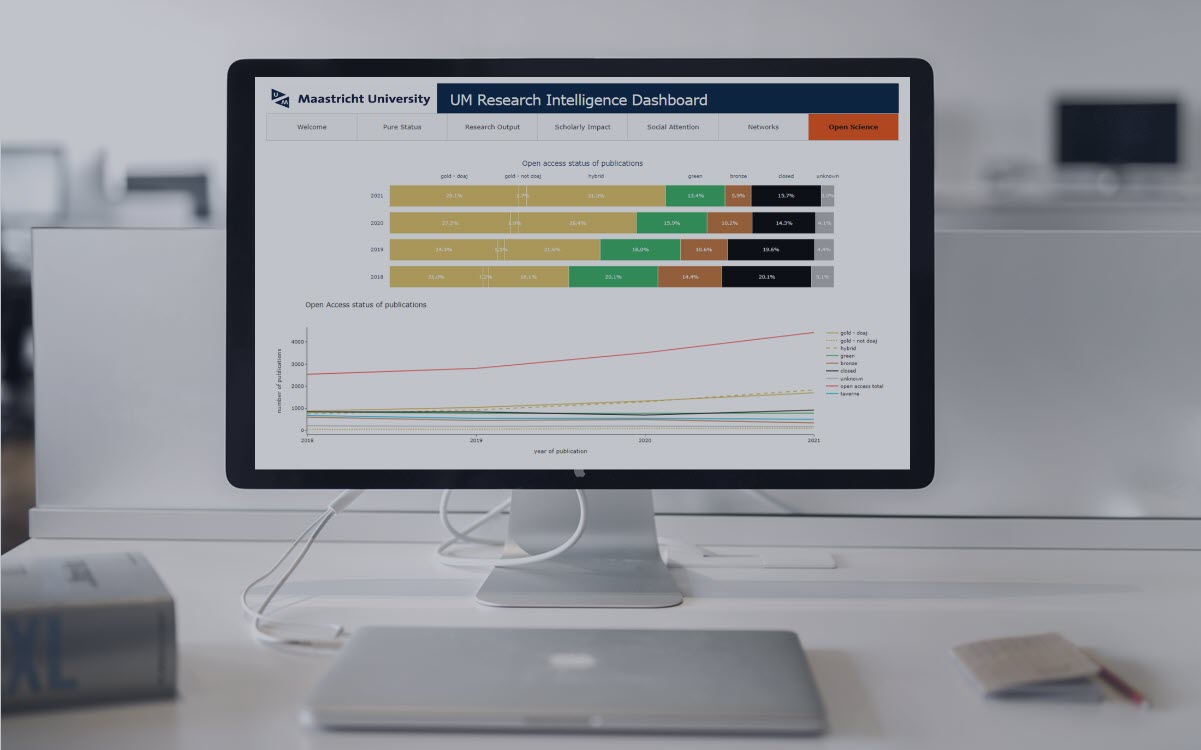Open Access in Maastricht
UM RI Dashboard
OA developments for UM, as well as per faculty or research school, can be followed via the UM RI dashboard. The library developed this research intelligence tool to support research policy in Maastricht.
Below is a screenshot of our Open Access monitor. Both in percentage and absolute numbers, the open access output increases annually. The green OA part includes author versions, but mainly publisher versions made public via Taverne after six months. Bronze publications are like Taverne publications, freely accessible to the world but without a (re-)use licence. These articles are not included in the national monitor because they have no open license and are only available through the publisher’s website. The publisher determines whether this remains the case.

Image source: UM RI Dashboard
- Gold – DOAJ: Free under an open license on the publisher site, published in an OA journal that is recognised by the Directory of Open Access Journals (DOAJ)
- Gold – not DOAJ: Free under an open license on the publisher site, published in an OA journal that is not (yet) recognised by DOAJ
- Hybrid: Free under an open license on the publisher’s site, published in a toll-access journal
- Bronze: Free to read on the publisher’s site, but without an open license for (re-)use
- Green: Toll access on the publisher’s site, but there is a free copy in an OA repository. Most green OA publications do not have an open license.
- Closed: Everything else
OA Ambition: 100%
The goal of the national Open Access policy is to sustainably remove all barriers to accessing scientific knowledge.
The availability of scientific results is essential to solving societal challenges. Think of the corona crisis and climate change. Researchers, students, journalists and others must have access to scientific information without barriers as much as possible. This should become standard practice in all areas of science. We welcome the investments that the Ministry of Education, Culture and Science will make in Open Science through 2031.
As part of the Open Science policy, we focus on the following in the coming years:
- Removing barriers to the creation, reading, reuse and evaluation of all Dutch output (i.e.not only focusing on peer-reviewed articles);
- Joint investments by knowledge parties and government in a fair and sustainable Open Access policy;
- Strengthening the various Open Access routes leading to more steering by the academic community (think of Maastricht University Press and other non-APC-driven publishers);
- Further strengthening collaboration with civil society stakeholders.
UNL and the Dutch universities will expand the annual Open Access monitor to guide the various Open Access tools better. From next year, we will also report Open Access figures on digital books, book chapters and conference contributions, among others.
Ron Aardening
Scholarly Communication and Publishing
More information
- UM Open Access Portal
- Contact the author or an expert via Ask Your Librarian for all your questions about Open Access.


0 Comments